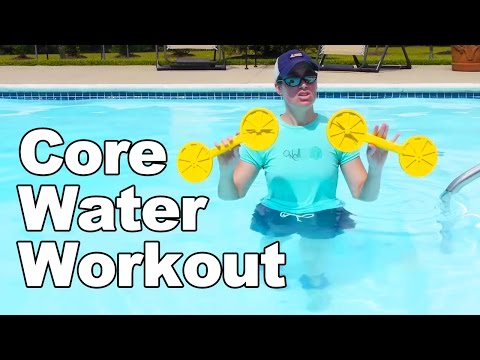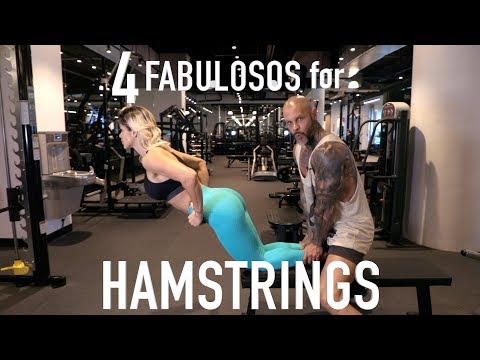
Water Workout for Your Core (Aquatic Therapy) These water exercises for your core can be done in a pool using special equipment, or toys. This is great for aquatic therapy. For more aquatic therapy exercises, visit
Related Videos:
Kickboard Exercises in a Pool:
Water Exercises, Standing (Aquatic Therapy):
===========================================
Click Below to SUBSCRIBE for More Videos:
=======================================
Doctor Jo is a licensed Physical Therapist and Doctor of Physical Therapy.
Facebook:
Twitter:
=======================================
Always use CAUTION with Exercising in a Pool:
If you can’t swim, don’t do these exercises unless there is a certified lifeguard on duty.
More Details About This Video:
Aquatic therapy can be a great workout for your core. Many times with back pain, you just can’t handle exercises on land. The water helps take gravity out of the picture so you can focus on your exercises.
It is really important to make sure you have good posture when you are in the pool. It is really easy to move your upper body a lot, but you want to try to keep your upper body straight and upright. Squeeze in your abdominals to help keep that upright position. Using ankle weights can be very beneficial. Not only do they give you some extra resistance, but they also keep your feet on the ground while doing the exercises.
Pool equipment, or pool toys as I like to call them, can range from very simple and cheap to very elaborate and expensive. Today I am going to show you some simple toys that you can find at most pools and not have to purchase on your own. The first set of toys is called paddles. These work well because you can open and close the slits to make more or less resistance. The next set is dumbbells. These are not like land dumbbells. They are very light and made of foam. So they not only give you good resistance in the water, but they also make it hard to keep them down in the water. The final one is a kickboard. This can really give you resistance in the water by pushing and pulling it halfway in the water. The faster you push with all these toys, the more resistance you will get.
The first exercise shown with the paddles is a gait exercise. You want to push out with the opposite arm of the leg that goes forward. This is how we walk normally on land, and is only difficult when you think too hard! Try not to let the resistance push you around. If you cannot stay upright, then you are not ready for equipment yet.
The next exercise, shown with the dumbbells, is in a staggered stance position. This is with one foot in front of the other. It is almost like you are in a lunge position. Bend down a little into the water to help keep your position. Start by alternating one arm in front and one arm in back. Keep your arms straight and push and pull through the water. Don’t bring the dumbbells out of the water. Then switch feet, and push and pull both arms together. If you feel like the paddles or dumbbells are too much resistance, you can do these just using your hands. Try each of these 15 times, and then work your way up!
Finally, with the kickboard, put it about halfway in the water. Simply push and pull the board towards and away from you while you are walking forwards and backwards. Then turn to the side, and put your arm straight out in front of you. Put the kickboard out in front of you and step sideways.
Water Workout for Your Core (Aquatic Therapy):
DISCLAIMER: This video and any related comments are not medical advice. Doctor Jo is a licensed Physical Therapist and Doctor of Physical Therapy; however, she is not YOUR Physical Therapist and can’t possibly diagnose you through the Internet. So don’t use this information to avoid going to your own healthcare professional or to replace the advice they have given you. This information is only intended to show you the correct technique for physical therapy exercises and should not be used to self-diagnose or self-treat any medical condition. If you are not properly diagnosed, this information won’t help, and it could make things worse. So seriously, check with your healthcare professional before doing these techniques. If you experience any pain or difficulty while doing these exercises, stop immediately and see your healthcare professional.






